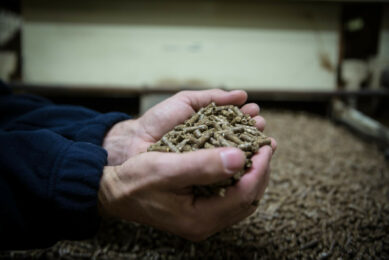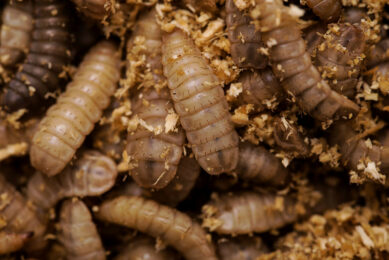Objective risk-based scoring of biosecurity

Investing in on-farm biosecurity is a no-brainer in the livestock industry, but where to put the extra effort and money in existing schemes is a more difficult question to answer. That is why the Faculty of Veterinary Medicine of Ghent University developed an objective risk-based scoring tool that quantifies a farms biosecurity which can be used to identify biosecurity weaknesses and strengths.
Proper biosecurity procedures, i.e. the measures that are implemented to reduce the risk of introduction and spread of disease, are essential for healthy animal production and antimicrobial use reduction. Thus, it is no surprise that over the past few years, the willingness to invest in biosecurity has been on the rise. However, some might have difficulties determining where time and money should be invested primarily in order to optimise biosecurity.
Validated tool
Biocheck.UGent is a validated, risk-based scoring system which was developed at the Faculty of Veterinary Medicine of Ghent University. It allows you to quantify a farms biosecurity using an online survey. The Biocheck tool approaches biosecurity in a broader way, instead of focusing on a specific disease, it focuses on the common aspects and transmission routes of many different types of disease agents. The system currently contains risk-based surveys for pig farms, poultry farms (layers and broilers) and cattle farms (veal calves, beef and dairy cattle). Soon, surveys for more types of animal production will become available. Biocheck.UGent has already been used successfully in multiple scientific studies to determine the on-farm biosecurity in a reliable and objective manner.
Easy online survey
The survey is composed of questions specifically about external and internal biosecurity and will ‘by design’ cover all measures taken to avoid the introduction of pathogens and all measures taken to prevent the spread of pathogens within the farm. These 2 categories are further divided into categories which make up the most important aspects for biosecurity for a particular type of animal production. Each question of the survey has its weight, which is needed to take into account the relative importance of the specific measure. It generally takes 20 minutes to complete a survey. After completing the survey, a score is determined for each subcategory. Based on the scores of the subcategories, subtotals for external and internal biosecurity are calculated. This allows you to identify the strengths or weaknesses in the farm’s biosecurity. In addition, a total score for biosecurity is calculated. These totals give an overall assessment of the farm’s biosecurity. For all the scores, the global and if available, the country average are given, which can be used as a benchmark. Additionally, subscribed users will be able to create their own goals for each subcategory. The Biocheck.UGent surveys can also be used for educational or exploratory purposes, the user only has to choose that the type of data entered is fictional, then this data will be saved in a different database. Additionally, users have the choice to store the biosecurity assessment report on the Biocheck.UGent server, making the report available for future referencing if needed. This feature is available to all registered users. Since its initial launch, the tool has been used over 14,150 times worldwide (Figure 1). Until now, the tool has been mostly used to score the biosecurity on pig (>9500 records) and broiler (>3000 records) farms. The more recently launched surveys for laying hens and cattle (>1000 records) are quickly gaining in popularity, but more data is needed.
Figure 1 – Worldwide use of the Biocheck.Ugent tool.

Large pig database
From 2017 up until now, Biocheck.UGent has been successfully used to assess the biosecurity of 2,074 real pig herds in 54 countries. According to the data collected, the world average for external biosecurity (72%) is higher than that of internal biosecurity (59%) on pig farms. This is most likely down to the fact that in pig production, external biosecurity measures have been discussed earlier due to the outbreaks of diseases such as Classical Swine Fever and African Swine Fever, whereas the importance of internal biosecurity is a more recent insight, partially linked to the struggle to reduce antimicrobial use. This trend is also visible when the data is considered on country-level; all countries where the tool was used sufficiently since 2017, have a higher score for external biosecurity when compared to internal biosecurity (Figure 2). It is important to note that the presented results are based on voluntary use of the Biocheck.UGent system and therefore not necessarily representative of the full production in the represented countries. In other words, on average, more time and money are invested in bio-exclusionary measures that reduce the risk of introducing pathogens into the pig herd. In contrast, relatively less attention is paid to measures which reduce the risk of spread of a disease agent within a herd.
Figure 2 – Biosecurity scores by country on pig farms (%).

Performance strengths and weaknesses
Overall, pig farms, scored the highest for the subcategory ’Purchase of breeding pigs, piglets and semen’ (world average 89%). This indicates that pig farmers are aware of the high disease introduction risk associated with the introduction of new animals or genetic material in their herd and required the precautions. However, the lowest scores were obtained for the subcategory ’Feed, water and equipment supply’ (world average 50%). This suggests that the risk of disease introduction through water, feed and/or equipment may be underestimated. Thus, more effort is needed to make pig farmers aware of the importance of buying feed from reputable sources, monitoring the water quality on at least a yearly basis and taking the necessary precautionary measures when bringing in equipment. Within internal biosecurity, pig farms performed less well in the subcategory ’Measures between compartments, working lines and use of equipment’ (world average = 49%), which is an important reason why the average score for internal biosecurity is considerably lower than the score for external biosecurity. Not taking the appropriate measures between compartments or applying working lines incorrectly, will quickly lead to the spread of disease agents from the least vulnerable compartments such as the finishers to the most vulnerable compartments such as the nursery or farrowing unit. Simple and low-cost measures such as providing compartment-specific clothing and equipment, in addition to performing work from the most vulnerable to the least vulnerable compartments, will greatly improve the internal biosecurity.
Figure 3 – Biosecurity scores by country on broiler farms (%).

Broiler data
The broiler database of Biocheck.UGent since 2017, contains submissions of 1,079 broiler flocks from 51 different countries. In contrast to the averages obtained from the pig herds, the world average for internal biosecurity (71%) is higher than that of external biosecurity (66%) on broiler farms. The same trend is visible on the country level, with the sole exception of Belgium (Figure 3). Like pig farms, the highest-scoring category is the ’Purchase of one-day-old chicks’ (world average 73 %), though this is lower than the corresponding category on the pigs survey. This is probably because on the many broiler farms, live animals are supplied more than six times a year. Each time a vehicle delivers the chicks to the farm is an event, where diseases can be possibly introduced onto the farm. The lowest-scoring category were ’Removal of manure and carcasses’ (57%) and ’Depopulation of broilers’. Manure and especially carcasses are major sources of disease agents and can attract vermin which are likely to carry diseases to the farm. The score for this category was considerably lower in Vietnam and the Philippines, most likely due to a combination of less stringent legislation for cadaver processing and the lack of a central cadaver rendering company. Additionally, this data indicates that the risk associated with the depopulation of the poultry houses is often an underestimated risk factor for disease introduction. It is a common mistake to think that biosecurity measures can be less stringent when the animals are being removed from the farm. However, many disease agents can persist in the environment and infect the following broiler flock. On broiler farms, the highest-scoring subcategory of internal biosecurity is ’Materials and measures between compartments’ (78%), which was the most neglected category on pig farms. Broiler farms likely to score higher here, as the different compartments correspond with different poultry houses. Each poultry house often has its own equipment and clothing available for farm personnel, which reduces the risk of disease agents spreading between the compartments. ’Cleaning and disinfection’ (67%) was the lowest-scoring subcategory, but still received a relatively high score. Indicating that most farmers are aware that a proper cleaning and disinfection protocol lowers the infection pressure and reduces the risk of disease transmission, yet many improvements can be made on the way the cleaning and disinfection is executed.
Future developments and services
The tool has already proven to be an effective tool to assess biosecurity on an individual herd level and can thus be used to identify a farms biosecurity weaknesses and strengths. With the development of new surveys on other types of animal production and as the database continues to grow daily, more accurate assessments can be made on country and world level of the biosecurity level of all types of animal production. This valuable information can be used to improve biosecurity and increase the animal population’s health for the benefit of animal and human health.
In order to meet the surging interest of the users, the Biocheck.UGent platform was recently rebuilt from scratch and relaunched. We aimed to increase the user-friendliness and data security of the platform, whilst keeping the online biosecurity assessment fully free of charge. However, a subscription-based service has also been added, which adds a variety of new features. Amongst others, subscribed users will gain access to the automatic feedback system which generates a personalised list of advice depending on their answers in the survey. Furthermore, they will be able to easily track any progress in their biosecurity scores, share and compare their results with other farms and much more. Lastly, it is possible to contact Biocheck.UGent to perform a farm audit by one of our biosecurity experts. They will perform a more in-depth biosecurity assessment and support you with a specific action plan. In the future, e-learning modules on biosecurity will be available for purchase on the platform.
Authors:
Jeroen Dewulf and Andy Vervaet, Department of Veterinary Epidemiology, Ghent University







